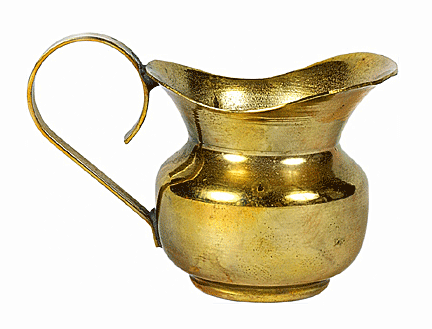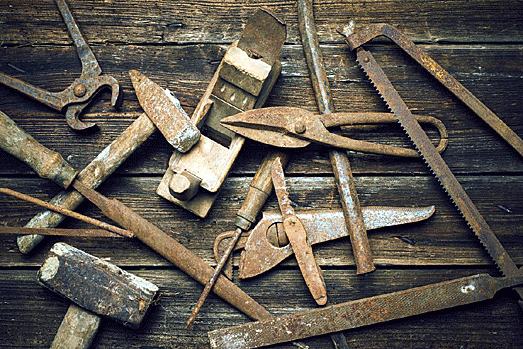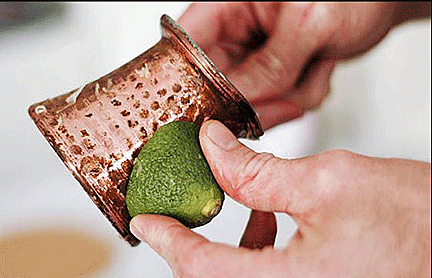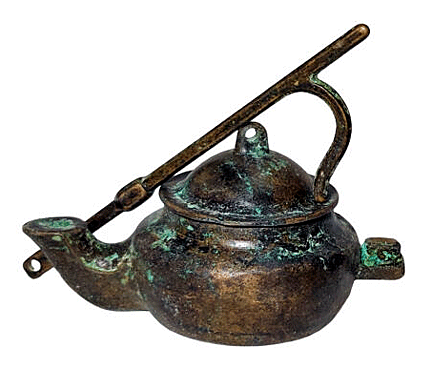|
Caring for Metal Antiques
by
Bob Brooke
 Part of collecting
antiques is caring for them. Next to paper ephemera, antiques made of
metal are some of the most volatile types of materials. Items made of
metal require care and maintenance to keep them in stable condition. Part of collecting
antiques is caring for them. Next to paper ephemera, antiques made of
metal are some of the most volatile types of materials. Items made of
metal require care and maintenance to keep them in stable condition.
Antique metal is susceptible to rust leading to an unsightly appearance
and lower value. There are several ways to remove rust with all-natural
solutions from your kitchen. Items like ketchup, vinegar, baking soda
and table salt are pantry staples that can restore your antique metal
pieces to their original shine.
But using the right cleaning materials is only half the solution. Using
the right technique to remove stubborn rust stains is also important to
avoid unwanted reactions to your metal antiques.
Removing
Rust from Iron and Steel
One of the best rust removers is ordinary white vinegar. The acid in it
easily lifts the rust due to due to the iron oxide displacin the
hydrogen ion in the acid. Combine that with lime juice and the citric
acid from the lime will double the effect without corroding the metal
under the rust. Adding salt to the mix gives this cleaning solution
abrasive qualities. Apply with a wire sponge scrub pad to remove
easy-to-remove rust.

To proceed, loosen the rust with the scrub pad, then dab a section of a
paper towel in the vinegar and rub it on. Leave this on for at least a
half hour. Remove any rust with the scrub pad. For added cleaning,
combine the lime juice and salt to create a thick paste, then rub it
into the remaining rust using the scrub pad. After rinsing with water,
dry thoroughly.
Cleaning
and Maintaining Copper, Brass, and Bronze
 Copper and its alloys, brass and bronze, have long been used to create
useful items—pots, swords, daggers, and also sculptures. Bronze was
probably the earliest of metals to be used. Copper, a softer metal, was
a principal in trade in the Mediterranean. The Romans minted coins from
brass. Most collectors will have copper, brass, and bronze items from
the 17th and 18th centuries—bed warmers, candlesticks, and other useful
and decorative items. In ancient times, bronze was the metal of choice
for armor and weapons. Copper and its alloys, brass and bronze, have long been used to create
useful items—pots, swords, daggers, and also sculptures. Bronze was
probably the earliest of metals to be used. Copper, a softer metal, was
a principal in trade in the Mediterranean. The Romans minted coins from
brass. Most collectors will have copper, brass, and bronze items from
the 17th and 18th centuries—bed warmers, candlesticks, and other useful
and decorative items. In ancient times, bronze was the metal of choice
for armor and weapons.
 Copper and brass are perhaps the most commonly found in collectible
antiques while bronze appears more in ancient objects. Both are easily
cleaned using commercial cleaning products like Brasso. But can also be
cleaned using regular household solutions. Copper and brass are perhaps the most commonly found in collectible
antiques while bronze appears more in ancient objects. Both are easily
cleaned using commercial cleaning products like Brasso. But can also be
cleaned using regular household solutions.
To clean copper objects, mix one-part flour with one-part salt. Add
enough vinegar to the dish to make a spreadable paste. Spread the
mixture over the copper item and let it sit for 30 minutes, then buff a
paper towel or soft terry towel until it shines.
 Because the beauty of antique bronze depends on its patina, it should
never be disturbed. An uneven one designates an authentic piece while
one with an even patina is usually a fake. About the only thing bronze
objects need is an occasionally dusting. Above all, do not use ammonia
to clean bronze as it’s an etching agent for it. Because the beauty of antique bronze depends on its patina, it should
never be disturbed. An uneven one designates an authentic piece while
one with an even patina is usually a fake. About the only thing bronze
objects need is an occasionally dusting. Above all, do not use ammonia
to clean bronze as it’s an etching agent for it.
Experts advise lacquering copper, brass, and bronze antiques to protect
them.
To read
more of my articles, please
visit
my Web site.
<
Back to Caring for Your Collections
Archives Next Article >
|
